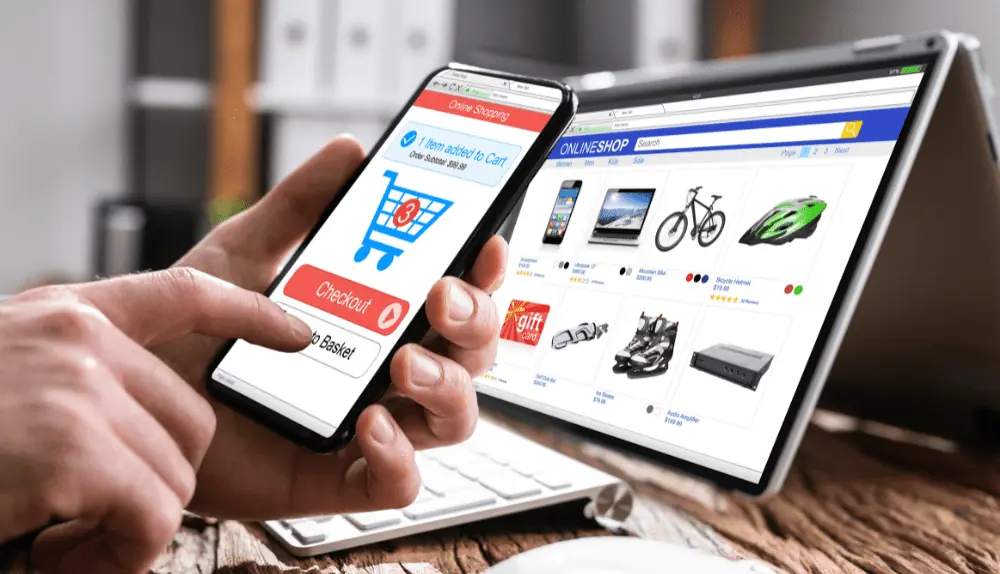In the early days of e-commerce, when shopping habits were shifting to digital, online payments were a significant pain point for both customers and merchants. Limited payment options, cumbersome data entry, and security concerns often made online transactions challenging and time-consuming.
As e-commerce continued to grow rapidly, various payment providers and digital wallets emerged, each with its unique checkout process and security protocols. While these innovations improved the online payment landscape to some extent, they also created a fragmented and inconsistent user experience, leading to confusion and frustration for customers.
Enter Secure Remote Commerce (SRC) – a new, groundbreaking payment technology that is reshaping the online shopping experience. By creating a universal buy button, SRC aims to simplify and secure the online payment process while reducing friction and boosting conversion rates for merchants.
The Genesis of Secure Remote Commerce
Secure Remote Commerce (SRC) was born out of a need to address the growing security concerns and complexity of online transactions. The increasing number of payment methods, merchant websites, and digital wallets has led to a convoluted and often frustrating user experience.

In response, the leading payment networks – Visa, Mastercard, American Express, and Discover – collaborated to introduce a unified, secure, and simple online payment solution Secure Remote Commerce in the US in October 2019, later branded as “Click to Pay”. This initiative led to the creation of SRC, which streamlines the online checkout process through a single, universal buy button.
How SRC Works: A Seamless and Secure Payment Experience
The fundamental principle behind SRC is to create a consistent and straightforward payment process across various merchant websites and devices. The universal buy button, branded as “Click to Pay,” is easily identifiable by customers, as it is marked with the familiar card network logos. When a customer decides to make a purchase, they simply click the “Click to Pay” button, which initiates the SRC transaction process.
Customer Identification: The customer is prompted to provide their email address or mobile number to initiate payment. This information is used by the SRC system to identify the customer and securely retrieve their stored payment details.
Payment Selection: Once the customer has been identified, they can select their preferred payment method from the available options. These options may include credit cards, debit cards, or digital wallets linked to their email address or mobile number.
Authentication and Authorization: Depending on the payment method chosen and the risk assessment, the customer may be required to complete additional authentication steps, such as two-factor authentication. This process ensures that the transaction is secure and minimizes the risk of fraud. After successful authentication, the transaction is authorized, and the payment is processed.
Transaction Confirmation: Once the payment has been processed, the customer receives a confirmation message, and the transaction is complete.
Addressing Privacy Concerns with SRC
In an era of increasing concerns about data privacy, customers are often wary of providing their personal information to multiple merchants and payment providers. SRC addresses these concerns by securely storing the customer’s payment details within the system rather than on individual merchant websites. This not only reduces the risk of data breaches but also minimizes the amount of personal information customers need to share with multiple parties.
When customers use the “Click to Pay” button, they only need to provide their email address or mobile number to initiate the transaction. The SRC system then securely retrieves their stored payment information and processes the transaction without needing the customer to re-enter their payment details on each merchant’s website. This approach streamlines the checkout process and gives customers greater control over their personal information, enhancing trust in the online shopping experience.
The Role of Tokenization in SRC
One of the key security features of SRC is tokenization, a process that replaces sensitive payment information with unique, encrypted tokens. When a customer initiates a transaction using the “Click to Pay” button, their payment details are tokenized before being transmitted to the merchant. This process ensures that the merchant never receives or stores the customer’s actual payment information, minimizing the risk of data breaches and fraud.
Tokenization also plays a crucial role in facilitating seamless transactions across multiple devices and platforms. By associating tokens with a customer’s email address or mobile number, the SRC system can securely retrieve the customer’s stored payment information, regardless of the device or merchant website being used. This allows customers to enjoy a consistent and secure payment experience, even as they switch between devices and shop at different online retailers.
The Benefits of SRC for Customers
Simplified Checkout Experience: With the “Click to Pay” button, customers can enjoy a streamlined checkout process across various merchant websites, eliminating the need to remember multiple passwords or input payment information repeatedly.
Enhanced Security: SRC employs advanced security measures, including tokenization and encryption, to protect customers’ payment information from fraud and data breaches. Furthermore, the added layers of authentication reduce the risk of unauthorized transactions.
Greater Payment Flexibility: SRC supports multiple payment methods, including credit cards, debit cards, and digital wallets, providing customers with the flexibility to choose their preferred option.
The Benefits of SRC for Merchants
Increased Conversion Rates: By simplifying the checkout process, SRC reduces the likelihood of cart abandonment, leading to higher conversion rates and increased sales for merchants.
Reduced Fraud and Chargebacks: SRC’s robust security features, such as tokenization and multi-factor authentication, help minimize the risk of fraud and chargebacks, saving merchants time and money.
Streamlined Integration and Maintenance: Implementing SRC is relatively easy, as merchants can integrate the “Click to Pay” button into their existing checkout systems. The universal buy button can be added alongside other payment options, providing customers with a familiar and convenient way to pay. The card networks maintain and update the SRC system, reducing the burden on merchants to manage security and compliance.
Enhanced Brand Trust: Offering a secure and familiar payment option like SRC can help merchants build trust with their customers, increasing customer loyalty and repeat business.
Global Reach: As a universal solution supported by major card networks, SRC allows merchants to easily expand their global reach and cater to international customers with a secure and smooth payment experience.
Future-Proofing: As e-commerce continues to evolve, adopting SRC allows merchants to stay ahead of the curve and easily adapt to new payment technologies and trends.
A Word of Caution
As the adoption of Secure Remote Commerce (SRC) grows, merchants and consumers must be aware of the potential risks and challenges associated with this innovative payment technology. While SRC offers a streamlined checkout process and enhanced security features, it is essential to understand and address any concerns.
Potential Risks and Considerations for Merchants
Integration and Compatibility: Integrating SRC into existing payment systems may require technical expertise and resources, especially for smaller merchants. Ensuring compatibility with other payment methods and digital wallets is also crucial to provide a seamless checkout experience for customers. Merchants should carefully evaluate their existing systems and consult with payment providers to ensure a smooth transition to SRC.
Regulatory Compliance: Merchants must comply with the complex and varied regulatory landscape in different jurisdictions when adopting SRC. Failing to comply with local regulations can lead to legal issues and damage a merchant’s reputation. Merchants should work closely with their payment providers and legal advisors to ensure they meet the specific regulatory requirements of their markets.
Fraud and Cybersecurity Risks: While SRC offers robust security features, no system is entirely immune to cyber threats. Merchants must implement additional security measures to protect their customers’ data and stay updated on the latest cybersecurity threats. Regular security audits and employee training on cybersecurity best practices can help mitigate potential risks.
Potential Risks and Considerations for Consumers
Privacy and Data Security: Consumers may have concerns about providing their email addresses or mobile numbers to initiate transactions through SRC. Consumers must understand how their personal information is protected and used within the system. Before adopting SRC, consumers should research the privacy policies of the merchants and payment providers they use and ensure their data is handled securely.
Trust and Reliability: Trust is crucial for the widespread adoption of SRC among consumers. While the backing of major payment networks lends credibility to SRC, consumers may still be hesitant to embrace the new technology. Consumers should familiarize themselves with the security features and benefits of SRC to make informed decisions about whether to adopt the technology.
Interoperability and User Experience: As SRC competes with other payment solutions and digital wallets, ensuring a seamless user experience across different platforms is vital. Consumers should verify the compatibility of SRC with their preferred online retailers and payment providers to avoid potential friction during the checkout process.
The Future of Secure Remote Commerce
The advent of Secure Remote Commerce has the potential to significantly transform the e-commerce landscape, benefiting both customers and merchants alike. As more businesses adopt the “Click to Pay” button and SRC gains widespread acceptance, the online shopping experience will become even more streamlined and secure.
In the United States, more than 10,000 merchants, including Jo-Ann Fabric, JoS. A. Bank, Cinemark, Rakuten, SHOP.com, Marriott, Expedia, Fresh Direct, and Crafts, Lowe’s, Papa Johns, Saks Fifth Avenue, and Crate & Barrel have adopted Click to Pay.
The technology is being implemented outside the US by merchants such as The Warehouse, Noel Leeming, Torpedo7, Emirates, Warehouse Stationery, 1-day, Pizza Hut Australia Ticketek, and Mitre 10. Additionally, PayPal, Google Pay, Apple Pay, and Amazon already offer one-click checkout.
Looking ahead, we can expect to see further innovations in the SRC ecosystem, such as the integration of additional payment methods, loyalty programs, and personalized offers. These enhancements will provide customers with a richer shopping experience and help merchants better understand and cater to their customer base.
Final words
Secure Remote Commerce (SRC) represents a significant leap forward in the world of e-commerce, offering a more secure, seamless, and user-friendly online payment experience for customers and merchants alike. SRC is poised to redefine how consumers and merchants interact in the digital marketplace. Embracing this innovative solution will undoubtedly be a smart move for businesses looking to stay competitive and thrive in the rapidly evolving world of online commerce.
However, merchants and consumers must be aware of the potential risks and challenges associated with adopting SRC. By staying informed and addressing these concerns proactively, all parties can fully harness the benefits of this innovative payment solution and confidently navigate the ever-changing landscape of e-commerce.
As we look to the future, the continued growth and development of Secure Remote Commerce will undoubtedly lead to further enhancements in the online shopping experience, providing even greater convenience and security for customers and merchants worldwide.

